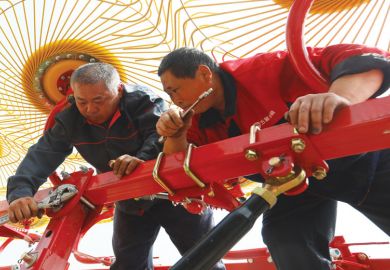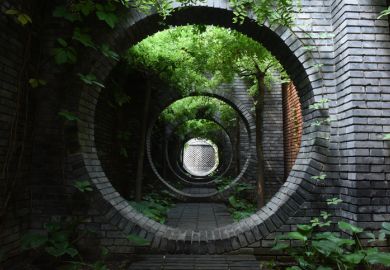The dissolution of the boundaries between disciplines is a defining movement of present times. The divisions in western thought that for so long yielded deep knowledge by an unprecedented concentration of effort in narrow subject areas now seem to be an obstacle to truer understanding and action. Criminology and genetics, urban studies and media studies are energised by a new passion for interdisciplinarity. Perhaps such holism will also help put behind us the ludicrous artificial standoff between science and art. It could also attract young people to the understanding and making of the physical world.
Fourth Door Review exists to serve just such a cause. Started in 1996 as a solo project by Oliver Lowenstein, it remains centred on its founding editor's engaging and eclectic interests and chatty style. Its mission is "dissolving the differences between ecology and technology, land art and digital crafts, music and media: a leading-edge brew of the future possible".
Five issues of the magazine, however, do not yet take the reader very far on the promised journey. There is no doubting the seriousness of intent - witness the insistence on patient and sure compilation.
The patience is that of a fisherman: waiting for an adequate catch but substantially at the mercy of chance encounter. One issue, for example, includes articles on traditional Portuguese wooden toys, Caledonian forestry, music/light fusions, fibre optics in architecture, holography and Susan Degres's watery photographs. Such a mix is fine - but over five issues, the impression is of a display of personal interests with insufficient distillation. The graphical layout is excellent, and there are some beautiful images - but the repetition of illustrations on different pages indicates the absence of an editor's knife.
Lowenstein has engaged with some key themes and some significant thinkers and doers such as the scientific philosopher Fritjof Capra, musician Brian Eno and architect Edward Cullinan. Cyberspace, architecture, music, craft, art and eco-science are recurrent themes. However, one is left with the feeling that the best in boundary-blurring practice has not been keenly tracked down to show just how powerful such approaches are.
Interdisciplinarity by itself should not guarantee inclusion. Arigorous approach requires a critical stance. The long articles should come as a welcome return to depth, but not if they serve simply as showcases, however important the particular work.
Is the enterprise problematic by its very nature? Is the dissolution of boundaries now so much part of culture that it is hard for a magazine specialising in it to make a distinct contribution? How to avoid a common post-modernist weakness: the blurring of subject areas leading to a loss of sharpness of purpose?
Another word for the magazine's motive force is multiculturalism, defined not in terms of ethnicity but as the harnessing of the creative synergies of different approaches, different subjects, different ways of doing things - the recognition of difference itself as the greatest creative driver without which the new cannot appear. Pluralism acknowledges and enjoys such difference. Premature harmonisation results in dumbing down. Fusion is a potent subject for study, but I would like to see Fourth Door Review muster much more investigative and critical focus.
Sunand Prasad is an architect and member of the Commission for Architecture and the Built Environment.
Fourth Door Review
Editor - Oliver Lowenstein
ISBN - ISSN 1364 5110
Publisher - Hyacinth House
www.fourthdoor.co.uk
Price - £9.00 (individuals) £13.00 (institutions)



